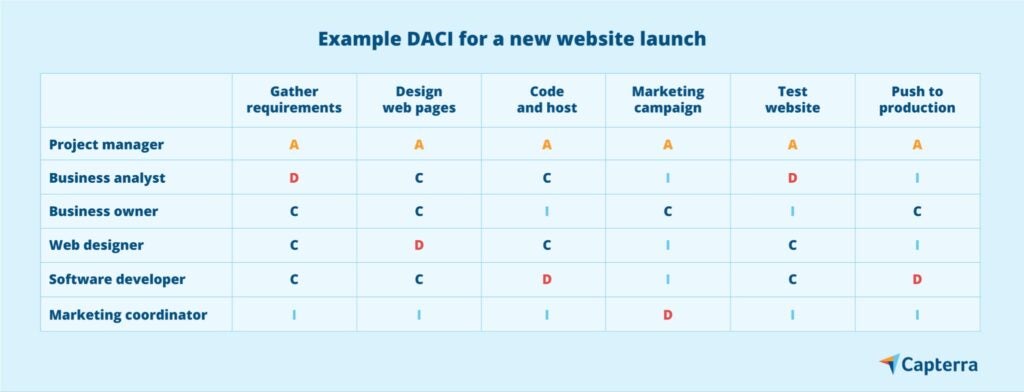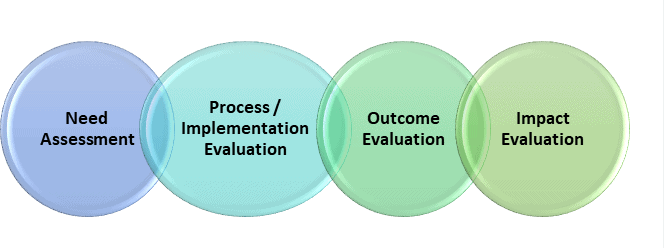Key takeaways
In project management, operational readiness or ops readiness can be the difference between a project’s success and its failure. By achieving operational readiness, you can ensure all aspects of a project are aligned, functional, and ready to seamlessly support the way operations are intended. To do this, you must meticulously plan, assess, and execute so that when a project goes live, it’s more likely to do so without any unanticipated issues or delays.
What Is Operational Readiness?
Think of operational readiness as having three pillars: people, processes, and technology. True operational readiness ensures these three pillars are ready to perform all their required functions without issues.
Achieving operational readiness means all potential risks have been mitigated and any necessary resources, training, and processes are ready and in place. True operational readiness answers the question “Is everything in place and functioning as expected to start operations?”
In other words, you might think of operational readiness as a holistic approach meant to examine and address all aspects of managing a project.
Operational Readiness in Project Management
Operational readiness is a project management concept pertaining to a critical phase that should occur toward the end of the project’s life cycle. It is essential to know exactly what it means and to lay the foundations for it much earlier in the process.
During this phase, the project team verifies all aspects are ready to transition from planning and development to actual operation. This entails exhaustive testing, training, and validation to ensure all systems are fully integrated, the processes are understood and working, and all team members are prepared to assume their roles.
The project manager’s responsibility in operational readiness
Project managers play a key role in achieving true ops readiness. Their responsibilities in the process include:
- Coordinating with stakeholders to ensure all relevant parties are fully engaged throughout the readiness phase.
- Developing a comprehensive readiness plan that outlines all necessary steps, timelines, and responsibilities.
- Overseeing readiness testing to ensure all systems and processes are tested thoroughly.
- Managing risk to identify potential issues and implement strategies to mitigate them.
Why you shouldn’t skip operational readiness
It doesn’t matter what kind of project manager you are or the type of project you’re managing, you should give the proper attention it requires. Releasing a project that isn’t ready for deployment can lead to:
Operational failures: If systems and processes don’t function as intended, it can cause disruptions to operations.
Increased costs: Unplanned and unanticipated issues may result in cost increases due to delays, rework, or needing additional resources.
Damaged reputation: You run the risk of damaging the organization’s reputation, particularly if the project impacts the customers or stakeholders.
Safety risks: Sometimes, a lack of operational readiness can pose serious safety risks to personnel and members of the public.
READ MORE: Components of Risk Management: Everything You Need to Know
How to Measure Operational Readiness
There are specific criteria and metrics by which you can measure operational readiness. Using these measurements will help determine if the project is ready to go live or if there are areas that might need more attention.
Various key metrics to measure operational readiness may include:
System performance: Checking to verify all technical systems meet the required performance standards.
Process compliance: Ensuring all operational processes are documented, understood, and they are being followed.
Personnel training: Completely training all relevant personnel and ensuring they are competent in their respective roles.
Resource availability: Acquiring and confirming all the necessary resources — be they human, financial, or material — are ready to be deployed.
How to assess and quantify readiness levels
Once you establish these metrics, you need to assess and quantify the readiness level by evaluating all components of the project, which can be done by following these steps:
- Conduct regular audits and identify gaps in readiness and then fix or improve those areas.
- Follow an operational readiness checklist to ensure all aspects of readiness are covered.
- Involve key stakeholders in the assessment process to gain valuable insights and ensure you’re considering their perspectives.
- Conduct tests and simulations to identify potential issues before they can have a critical impact.
- Create mechanisms for continuous feedback to allow for real-time adjustments and improvements.
Developing and Creating an Operational Readiness Plan
The process of developing and creating an operational readiness plan is structured in such a way to ensure all aspects of a project are properly prepared for operation.
The following outlines the steps to create an effective operational readiness checklist that assures you don’t miss anything crucial.
1. Define scope and objective. The first step is to ask questions like, what does success look like? What are the key deliverables? Answer these questions first to help guide you through the entire readiness process.
2. Identify key stakeholders. Determine who will be involved in the project and who will be impacted by its outcome. Consider using a DACI model to assign clear roles to senior levels of the project management team.

3. Assess current readiness levels. Do an initial assessment and determine your current readiness state so you can identify the gaps and areas that need attention. This is an essential part of the operational readiness framework.
4. Develop readiness criteria and metrics. Define specific criteria and metrics for measuring readiness that align with the project’s objectives and scope.
5. Create detailed action plans. Develop action plans that list the steps you need to follow to achieve full ops readiness. You should include timelines, responsibilities, and necessary resources in these plans.
6. Establish roles and responsibilities. Define the roles and responsibilities of all the team members involved in the readiness process and ensure everyone understands their part and that they are equipped to fulfill them.
7. Develop training and support programs. Once your personnel are in place, you need to organize training programs to ensure they’re all prepared for the job. You also need to provide ongoing support so you can address any emergent issues.
8. Implement risk management strategies. At this point, you need to identify all potential risks to operational readiness and develop strategies to mitigate them. Risk management typically includes contingency planning and risk monitoring.
9. Design a monitoring and reporting framework. Put a framework in place for monitoring progress and readiness status reporting, including regular updates and reviews to ensure everything is on track.

10. Conduct readiness testing and simulations. Thoroughly test and simulate to identify any issues, and ensure all systems and processes are fully functional before you go live.
11. Review and revise the plan regularly. Treat it like a living document. This allows you to regularly address any changes or new challenges as they happen. Conducting a regular operational readiness review will keep everything aligned.
12. Document and communicate the plan. Share it with all project stakeholders to maintain transparency and ensure everyone is on the same page.
READ MORE: What is Stakeholder Analysis?
Strategies for Sustaining Operational Readiness
You can’t just achieve operational readiness and then forget about it. It requires ongoing effort to maintain and strategies to keep it at optimal levels.
- Continuous monitoring and assessment: Regularly monitor and assess readiness levels to identify and address emerging issues. Making a practice of this helps maintain operational readiness over the long term.
- Ongoing training and development: Provide continuous training and development to ensure your personnel remain competent and confident in their roles.
- Regular communication and updates: Keep the lines of communication with stakeholders open and regularly update them on readiness status. This keeps them informed and engaged and prevents misunderstandings.
- Proactive risk management: Risk management requires continuous diligence to identify and mitigate potential risks to operational readiness, such as updating contingency plans and adjusting strategies.
- Resource management and allocation: Manage and allocate human and material resources effectively to support operational readiness.
- Maintaining documentation and knowledgement management: Keep all documentation updated and share knowledge across the organization to prevent readiness gaps due to changes such as personnel turnover.
- Iterative readiness testing: Conduct regular readiness tests to identify and address any issues before they become critical. This helps maintain high readiness levels.
- Stakeholder engagement and feedback: Engage stakeholders regularly and solicit feedback to help ensure readiness efforts are aligned with organizational needs and expectations.
- Flexibility and adaptability: Prepare yourself to adapt to changes in the environment or project scope. You must be flexible in the dynamic context of maintaining operational readiness.
- Leadership and governance: Strong leadership and governance are essential to ensure that there is clear accountability and oversight for operational readiness efforts.
FAQs
The Bottom Line on Operational Readiness
Operational readiness is essential for the success of any project. It ensures that all systems, processes, and personnel are fully prepared so organizations can avoid costly disruptions, mitigate risks, and ensure a smooth transition to operation.
Ops readiness in project management requires comprehensive planning, continuous monitoring, and a commitment to ongoing improvement. By following a structured approach and engaging all relevant stakeholders, project managers can achieve and maintain a high level of operational readiness.





